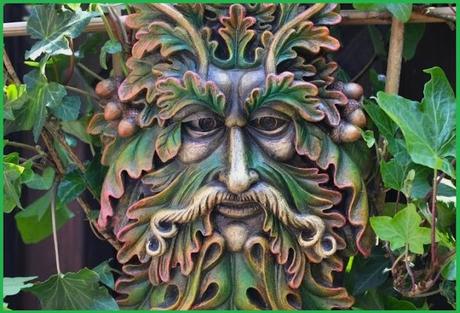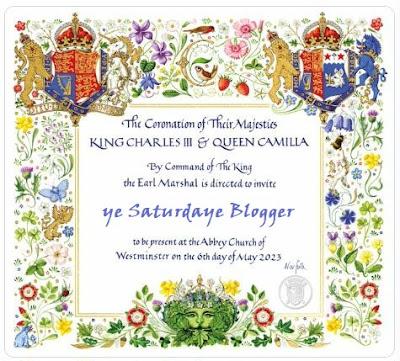Some were quick to denounce the use of a 'pagan' symbol in heraldic artist Andrew Jamieson's artwork for the official invitation to what is a profoundly religious ceremony in Westminster Abbey, for the Green Man is given prominence alongside the coats of arms of Charles and Camilla and a border of intricate floral design.
Being neither religious nor a monarchist myself, I can take a dispassionate interest in the dispute. I actually like the Green Man as he has been incorporated into Jamieson's design, and if anyone bothers to dig into the history and mythology behind the symbol - which is essentially about rebirth and renewal - they will end up with Adam and Eve and Seth, Adam's third son according to the book of Genesis.

the Green Man
There are accounts in early Semitic and Greek 'histories' that tell of Adam's attempt at the end of his long life (aged 930!) to gain immortality. It is said that he sent Seth back to the Garden of Eden to beg for some Oil of the Tree of Life. Seth was not allowed back into Paradise but the angel gave him three seeds from the Tree. On returning, he found that his father had died, so he placed the seeds under Adam's tongue and buried him. From the grave eventually a new tree grew - and that is the basis of the Green Man myth, recounted in medieval stories, portrayed in stained glass church windows and built into religious 'miracle' plays.The Green Man did not exist in pagan mythologies, He's Judaeo-Christian in origin and became part of the fabric of English life following the Norman conquest. Such 'pagan' connotation or provenance as has been attributed to him (for instance as the May Day fertility symbol known as 'Jack in the Green' or as an icon of the natural world in the face of industrialisation and exploitation of the planet), will have grown out of those original biblical and medieval religious myths. So Jamieson is merely giving new life to an ancient Christian motif, using it (one presumes very obviously) to suggest regeneration and in the knowledge that it echoes King Charles' love, concern and respect for the natural world.
There's no poem this week. Instead I thought I'd include a poetical musical bonus. It's Roger Waters and David Gilmour (with Rick Wright) of Pink Floyd performing a beautiful version of Grantchester Meadows (Click on the song title to activate the YouTube link.) I spent my teenage years in Cambridge (actually went to the same school as David Gilmour) and used to spend happy evenings drinking at the Green Man pub in Grantchester.
Finally, just in case you weren't lucky enough to receive one yourself, this is the official invitation to the coronation (featuring that Green Man) which everyone has been getting so worked up about...

